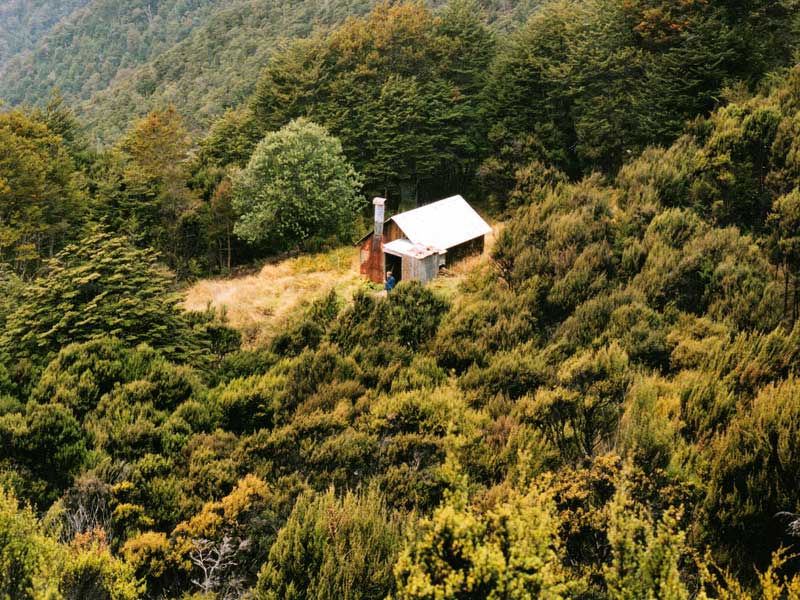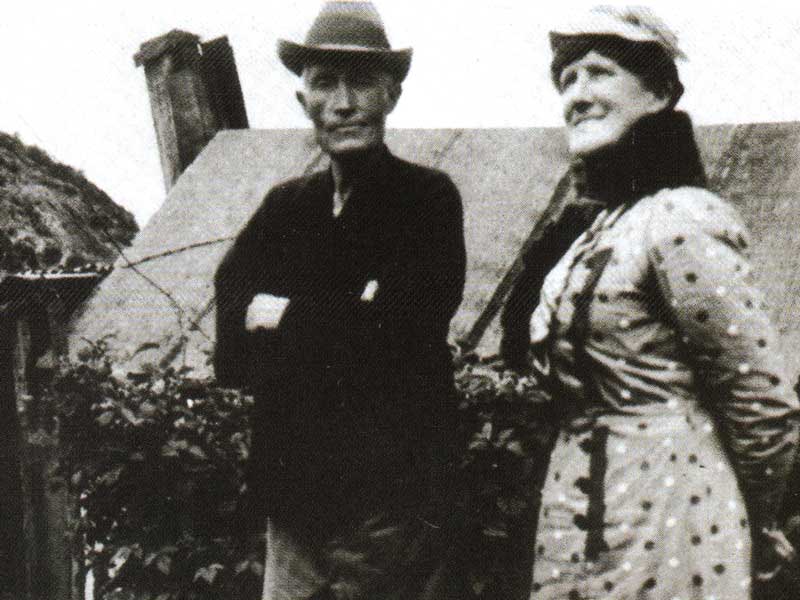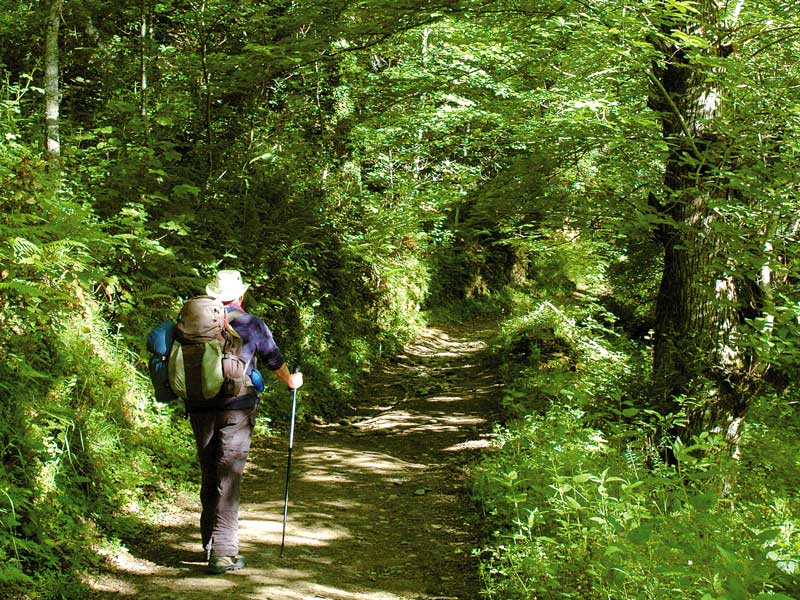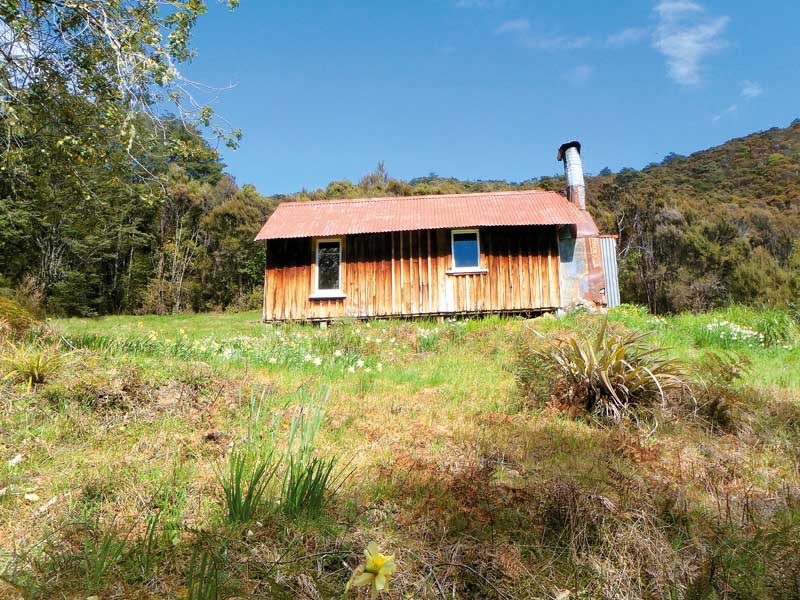An exploration in Golden Bay led me to discover one of the country’s most romantic pioneering stories. On a bright cool Sunday, Bill and I drove up the Cobb River Valley into the craggy ranges high above sea level that form a part of Kahurangi National Park. We parked the car and for two-and-a-half hours, clambered along a steep bush track through podocarp and beech trees. It was hard going for a city slicker. At last, in a small clearing, we came across the reason for the climb—a small, Spartan, bush hut made of pit-sawn timber known as Asbestos Cottage.
Inside, pinned to a wall, was a blurry photograph of a man and woman. She was tall, full busted, and upright, dressed in a spotted Edwardian dress with a cap on her head and a ruff of fur around her neck. Next to her stood a smaller, scrawny man, who wore a brimmed hat. For nearly four decades, Annie and Henry Chaffey had struggled to survive on this spot, in the belly of the bush, among the bullying winds and clotted snow.
Earlier, in Timaru, Annie and Henry, both escaping disastrous marriages, had developed a strong affection for each other. It was 1913—when society shuddered at such liaisons—and although community reprisals were apparently less feared than those of Annie’s husband, the couple fled to this remote spot, 900 metres above sea level and an arduous two-day walk from the first smudge of civilisation.
Just existing was a full-time task. To top up the food they grew in their garden, and the rabbits, weka, and goats that Henry hunted in the hills, this wiry little man made a two-day, 52km trek every few weeks. On the return leg, he lugged 50kg of supplies uphill in a backpack, pausing only to swig from the bottle of whisky he made sure was handy.
Annie made cheese from goats’ milk and soap from goats’ fat and occasionally sent friends presents such as native snail shells, weka oil for rheumatism, jams, and pickles.
Henry also went prospecting and on his wanderings found a large deposit of serpentine rock. At night, by the fire, the couple broke the rock they’d carried home to extract the threads of high-quality asbestos, which Henry carried out on his back to sell. The perils of asbestos had never been heard of.
There is no marker along the track to mark the spot where, at the age of 83, Henry fell and died. Two years later, forced to return to Timaru and unable to face life without him, Annie dressed in her best nightgown, swallowed all her sleeping tablets, and lay down on the bed.
Footnote: Before setting out to the Asbestos Cottage, check the state of the road to the dam and the conditions on the track with DOC. The hut has a Historic Places Trust rating. On demand, transport services are available to or from the Cobb Valley. Contact DOC office for details.

Wairarapa – what a ripper
Elisabeth Easther signed up for a six-day 300km cycle journey with Green Jersey Tours to ride their Remutaka, Palliser, Tora Tour, and declared the experience gold class.








